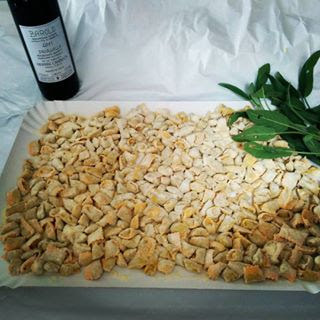 I am excited to announce that, in connection with a talented local chef from Barbaresco, the old train station of Barbaresco will play host to interactive cooking classes every Sunday afternoon during September, October and November. If you are looking for an authentic cooking class of local Piedmont dishes, look no further. I can also arrange a class based on the famed white truffle during truffle season. The idea was to create an accessible cooking class at a special location for individuals or groups to participate in, enjoy local cooking, share experiences and generally have a good time! The classes are run by a local Piedmont chef, and will focus on typical pasta dishes - tajarin (egg noodle pasta) and agnolotti del "plin" (stuffed pasta), together with the tricks of creating the best pasta sauces (think the famed ragu, or butter and sage or sugo d'arrosto). Other menu options may include risotto con tartufo, bonet (a delicious local dessert, made with eggs, milk, amaretti biscuits, caramel, all baked in a bain-marie). The classes will be held every Sunday afternoon starting from 10 September, through to 26 November, from 3:00 pm - 5:00 pm. The classes are for a minimum of 4 people, and are strictly limited to a maximum of 10 participants. We accept individual bookings also. The cost of the cooking class is EUR 50 pp. The classes include recipes, a glass of wine, cooking lesson with translation, and take-away pack of biscuits / pasta made on the day. I can also arrange a truffle hunt, paired with a cooking class based on local dishes for truffles. Cost of truffles will require a supplement, at market price. If you have kids, we can also arrange a special parents / kids cooking class, upon request. Release the masterchef within, and get your hands dirty (literally) and sticky! Bookings through [email protected], stating number of people and preferred date. The cooking class schedule is as follows:
16 Comments
I always get asked for recommendations of where to stay in the Langhe. And I always give a similar response, so I decided to write a post on where to stay in the Langhe, to make it more efficient! The truth is that there are many, many amazing places to stay. Piedmont hospitality is second to none, and the choice, quality and service levels are vast. The first thing you need to decide is WHERE to stay. And by this I mean location according to your needs. 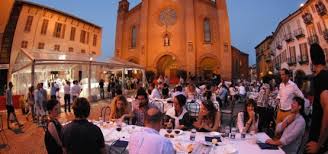 Options are: Alba, as bigger town, it's central hub. If you don't have a car, this would be pretty much your only option (or nearby Asti). In general I suggest that visitors have a car as the area is not really set up for public transport, and guided tours, while improving, are limited and can be expensive. It's more convenient to have your own car and explore the area at your own pace. In a little village: this is an attractive option, to indulge the Italian country life. Depending on your needs, if you select a little village, I would recommend one that has some amenities, like restaurants, bars, supermarket etc, so you have the option of forgetting the car and walking. Best villages in this respect would be: Monforte D'Alba, La Morra, Neive. In the countryside: for the quintessential Langhe lifestyle experience, I would recommend staying in a family-run place nestled in the vineyards. While the vineyards can be busy and noisy places at times (think tractors during pruning and harvest), otherwise, it is about as beautiful and relaxing as you could imagine. If you stay in the country, I would recommend a place that has a good restaurant attached, because it is always nice to have the option to eat well, drink better (you are, after all, in the heart of red wine country), not worry about driving and quietly retreat to your lodgings after, also with the remains of the wine bottle in hand.... 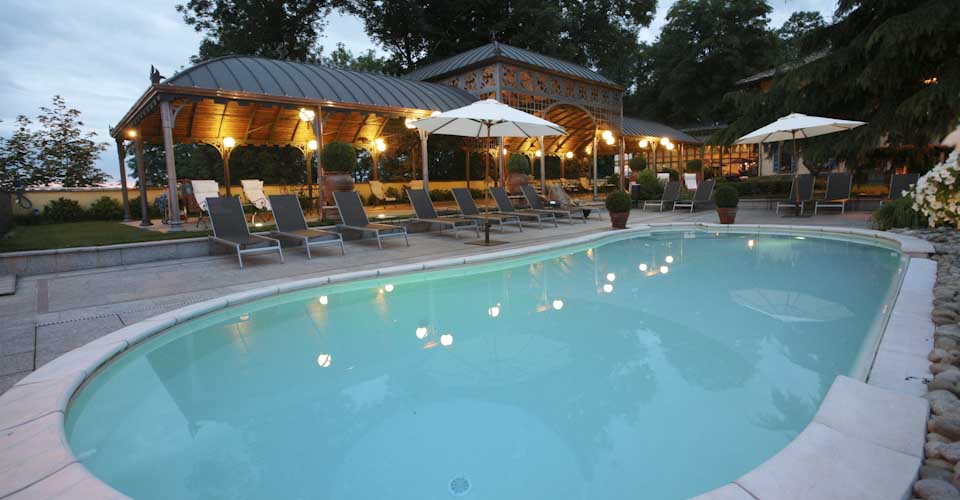 Villa Beccaris, Monforte D'Alba Villa Beccaris, Monforte D'Alba So, here are some suggestions within the three 'location' options for a range of budgets (although in general nothing is particularly cheap) and needs. Be warned, the Langhe is popular, particularly in the Summer months and truffle fair season (late Sep - mid Nov) and good places book early. Alba centre L'ortodellerose B&B ($$): beautiful B&B right in the heart of Alba, also on airbnb. Vincafe ($$): in the heart of the action, modern, well-equipped rooms, also possibility of self-cater apartment, but can be noisy and difficult to park. Hotel Calissano ($$$): just outside of historical centre, large well-appointed hotel with parking. Piazza Duomo rooms ($$$): elegant, quality rooms attached to Piazza Duomo three-Michelin star restaurant. La Morra Agriturismo Brandini ($$): modern but classic rooms in country side backed by Eataly and Joe Bastianich. La Morra / Novello Angolo di Rosina ($): fantastic, friendly, family-ran B&B with terraces, restaurant and great feel. Barbaresco Casa Nicolini ($): pool, great restaurant with stunning view, modest lodgings. Monforte D'Alba La Torricella Agriturismo ($$): pool, great restaurant, winery, top class operation. La Casa Gialla ($$): self-catered well-appointed apartments run by passionate couple. Villa Carusera ($$$): Luxury private villa for hire, in historical centre, with pool. Villa Beccaris ($$$): beautiful villa lodgings with cozy rooms, gardens and pool in centre of Monforte D'Alba, with car park. Beyond Alba (nearby Asti) La Villa Hotel (Casa Daina) ($$$$): beautiful estate, luxury rooms, if you want to splurge. It’s early morning near the end of summer in Monforte D’Alba. The fog is still lingering from the night before. It brings an eerie, almost mystical atmosphere. And I’m excited! I am doing a late summer truffle hunt this morning with one of my trusted truffle hunters, and his gorgeous dog. It was raining in the morning, and he calls to check that I’m ok to go out in the rain. Er, hello! I didn’t buy gumboots for nothing. I want the authentic experience (I never do ‘simulated’ truffle hunts). I ask – is it ok for the truffles? He says it’s fine for the truffles, so I say let’s go! And go we did…. in his old 4x4 fiat panda. These cars are purpose built – small and nimble, but with the 4x4 capacity necessary to navigate this hilly countryside. There is a lot of mud, and the car is slipping and sliding down a deep descent, surrounded by vineyards, into the little valley. I am a little scared but I feel alive! We arrive in a picturesque spot, where there is forest all around and small plantation of hazelnut trees. Out pops his canine friend, Cheetah, a brown and white curly-haired dog of almost 6 years. She is relatively young, and exceptionally well-trained and you instantly see the bond between truffle hunter and dog. He talks of her affectionately, and rightly so, as it is her ability which is critical in being able to sniff out these underground delights! He tells me this spot is relatively convenient and easy, but we are already jumping streams and ducking under foliage. (I’m interested to see the difficult spots!) But I am taken aback by the beauty of the woods – a very green and healthy collection of poplars, ivy, ground cover, and other very tall trees (oak, walnut etc). It’s all completely wild and natural, but you couldn’t have made it more attractive if you tried - an enchanted forest; all your childhood books blended into one experience. Even while we are chatting about life as a truffle hunter, he has a keen eye on his dog. She is pacing around the forest floor, eager to please and scope out the hidden gems. Suddenly, she gets excited and starts digging. Then stops and quickly comes back to the hunter for a treat. He tells us that she has learned this technique, of finding the truffle, but not digging too much, because when they come at night, and you can’t see, she sniffs out the truffle, comes back and tells her master where it is, and then together they go, with torch in hand to collect the prize. It’s obviously important, particularly with the more precious and delicate white truffle, that the dog doesn’t dig too close for fear of damaging the outer flesh. The more perfect-looking and intact is the truffle, the higher the pricetag. 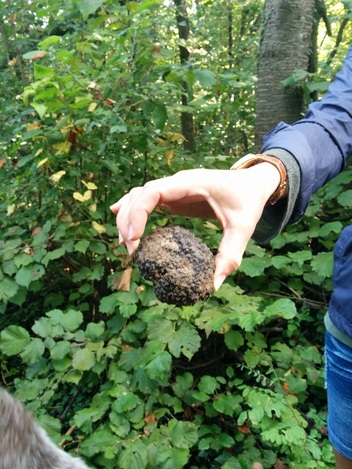 She has found a sizeable black truffle. It is the summer variety found in Italy between June and early September, not to be mistaken with another type of black truffle, sometimes also called ‘black truffle’ or ‘Perigord truffle’, which is a winter truffle, with darker flesh and white marbling. It is more highly prized than the summer black truffle, which has a paler, beige flesh. Neither of these, however, is as esteemed as the white truffle of Alba, found in the areas around Alba (the Langhe) and Asti. The season for the white truffle is from late September to January, but it depends of course upon the climactic conditions. For example, 2012 was too dry, and as a result, I am told, there weren’t many truffles, and the quality wasn’t good. Because of the scarcity, unfortunately this caused the price to skyrocket, although not because of the quality. In the height of truffle season the white truffle could fetch as high as EUR600 per 100g, although generally the price is more around EUR250 – 300 per 100g. 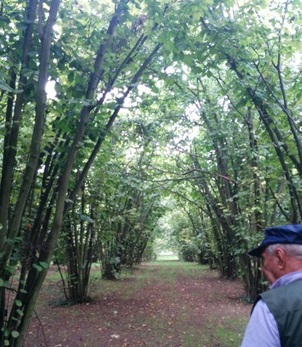 The truffle hunter tells me that he comes out two or three times a day (perhaps morning, after lunch and then during the night). This is because there is no way to know positively when the truffles will be ready. Evolutionary speaking, truffles (as an underground tuber) lost the ability to spread their spores through the air and instead rely upon fungivores (truffle eaters) to find the tuber for spore dispersion. That is why the sexual spores of the truffle have an attractive perfumed scent. But it seems that the precise point at which the sex spores are ready can be as elusive as the truffles themselves (is there no app for measuring this cycle??). As a result, he tells me that he sometimes goes over one section with his dog, and finds nothing, only to find truffles on the way back! With such uncertainty, and fine timing, it’s no wonder he comes three times a day or as often as he can. And for this, it is a job of real passion and patience. 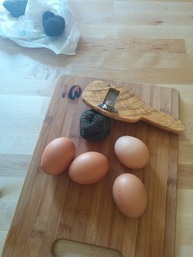 After a couple more location changes and a fair few more black truffles in tow, we finish up. And so how does one best enjoy these fine delicacies? The truffle hunter swears the best way to enjoy the white truffle is with egg, with the freshest white truffle of Alba generously shaved on top. He explains that you should never cook the white truffle because it loses its aromas. (Check out my blog post on Piazza Duomo, where I report on the best place to eat white truffle in Alba, IMHO.) A good day hunting? Perhaps - he says - but the epitome for our trifolau is in November or December, when it’s cold (possibly freezing as there can be snow) and he strikes gold and finds a big white truffle. It’s humbling to see a man of some years be so emotionally touched, still, by the search with his dog friend for the elusive white treasure. I organise real truffle hunt tours leaving from Monforte D’Alba from the months of June – January, conditions permitting.
If you’re a fine diner, on any trip to the Langhe in Piedmont (or even Italy, for that matter), it would be remiss of you not to consider visiting the three-Michelin starred restaurant, Piazza Duomo, which overlooks the piazza of the same name in Alba, the town that plays host to the international white truffle fair every year in October and November. The restaurant, a project of the Ceretto family, famous wine-producers of the Langhe and head chef Enrico Crippa, is the Langhe’s only three-Michelin starred restaurant, and one of eight in all of Italy. Crowned by the Michelin guide as the best restaurant in Piedmont in arguably the best region for food in Italy, it is possibly one of the best restaurants in Italy. And having dined there recently, I can confirm it is all that it is cracked up to be – simply an unforgettable experience, where eating the white truffle of Alba is a work of art. 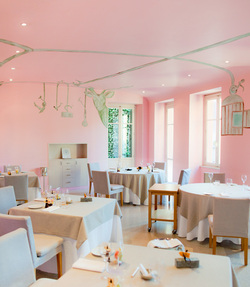 Photo by James Morgan Photo by James Morgan The entrance is an almost unmarked door down a laneway off the main piazza of Alba, a small but internationally famous formerly walled Roman town. The door is a deep crimson hue, and made me think that the restaurant would have a sensual and brooding atmosphere. Once inside, however, the feeling is quite different. Walking up brightly-lit stairs we were greeted by the charming maître d’. The décor is somewhat understated, minimalist, very modern and sleek but not cold or sterile. Adorned on the walls is an incredible work of art depicting, among other things, the 7 continents of the world in grape leaf formations. Jackets are taken and anticipation is high, and we are taken to one of very few tables in an incredibly intimate space. But ‘intimate’ may in fact be a misnomer because even though the room is small, the tables are set well apart allowing patrons to talk without being overheard. Also the lighting is strangely bright but I decided that this is because the food and wine are serious business here and you need to see properly all dishes in perfect light, like exhibiting art at a gallery. 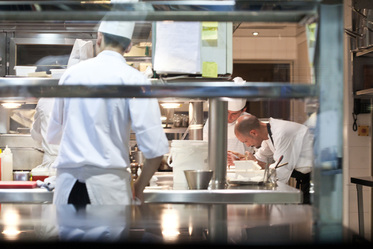 Photo by James Morgan Photo by James Morgan But given the small number of tables (probably less than 30), you feel like you are sharing an exclusive experience with the other diners; a sort of private show that is somehow performed night after night, year after year, with relentless meticulousness. I never felt even a hint of weariness. I have dined twice at Piazza Duomo and both times the energy and enthusiasm exhibited by all players was admirable. Perhaps this is because Piazza Duomo has enjoyed a meteoric rise and there has been no time to stand still or get bored. Opened in 2005, it gained its first Michelin star in 2006, the second in 2009 and was crowned with its third Michelin star on 14 November 2012, when head chef Enrico Crippa was only 41 years of age. 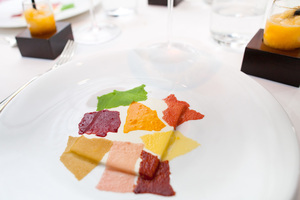 Photo by James Morgan Photo by James Morgan Crippa himself has an impressive CV, having won twice first prize at the Sologne Artistic Cuisine Competition (in 1990 and 1992). And when you see the presentation of the food, learning of this accolade should come as no surprise. All the restaurant’s dishes are presented as pieces of art. One of my favourite dishes is the Panna Cotta Matisse. Panna cotta is a traditional dessert from Piedmont, but the presentation of Crippa’s version is formidable, and makes eating it a shame. 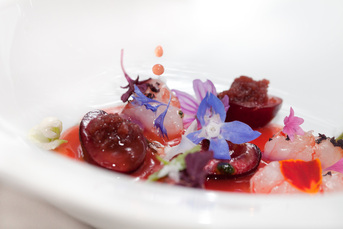 Photo by James Morgan Photo by James Morgan Another stand out dish is the salad known as 21….31….41. One of his signature dishes, the name refers to the number of ingredients that varies depending upon the season, with 41 ingredients at the height of Spring with the most ‘biodiverse’ example of the salad adorned with beautiful microflowers, versus the more restrained winter version of 21 leaves, herbs and garnishes. The method of eating the salad is an art form in itself. It is served in a small upright bowl, you are provided with pincers and instructed to commence at the top of the salad and work your way down to the bottom, as the salad is constructed in a particular way to ensure that the flavours develop in the most pleasing way. At the end, there is a small petri dish of Japanese inspired dressing, that serves as a sort of palate cleanser.  Having been lucky enough to eat the white truffle of Alba a number of times, I can say that the best white truffle dish I have ever had, and possibly the best dish of my life, was Crippa’s signature white truffle dish. This elegant dish is a potato cream, with Lapsang Souchong tea, quail egg and a generous amount of shaved white truffle, served in a beautiful and delicate glass vessel. The recipe was showcased at the Truffle Fair of Alba in 2012 and having read the recipe, there is no way you would ever try to recreate this dish at home. It is truly a dish better left to the experts, to be enjoyed in Alba during the seasonal truffle fair, when the electric atmosphere descends upon Alba during the second half of October and November for the white truffle. Other diners confessed to me that, having sampled many other restaurant’s attempts at showcasing the Alba white truffle, this was by far the most spectacular. Simply put, unforgettable. What more can I say. Crippa is a genius. Just make sure you book in advance to avoid disappointment. |
AuthorEleanor Fletcher - living in the heart of the Langhe, Monforte D'Alba (Barolo). Searching for great eats, formidable drinks and fun times. Married to a Barolo and Barbaresco producer, plus a mother of two 'principesse'. Archives
August 2017
Categories
All
|
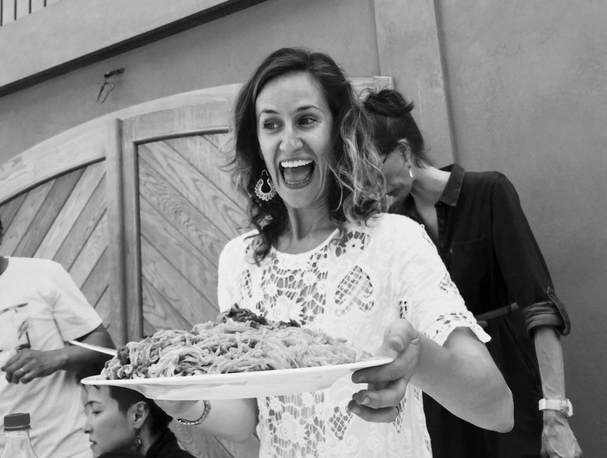
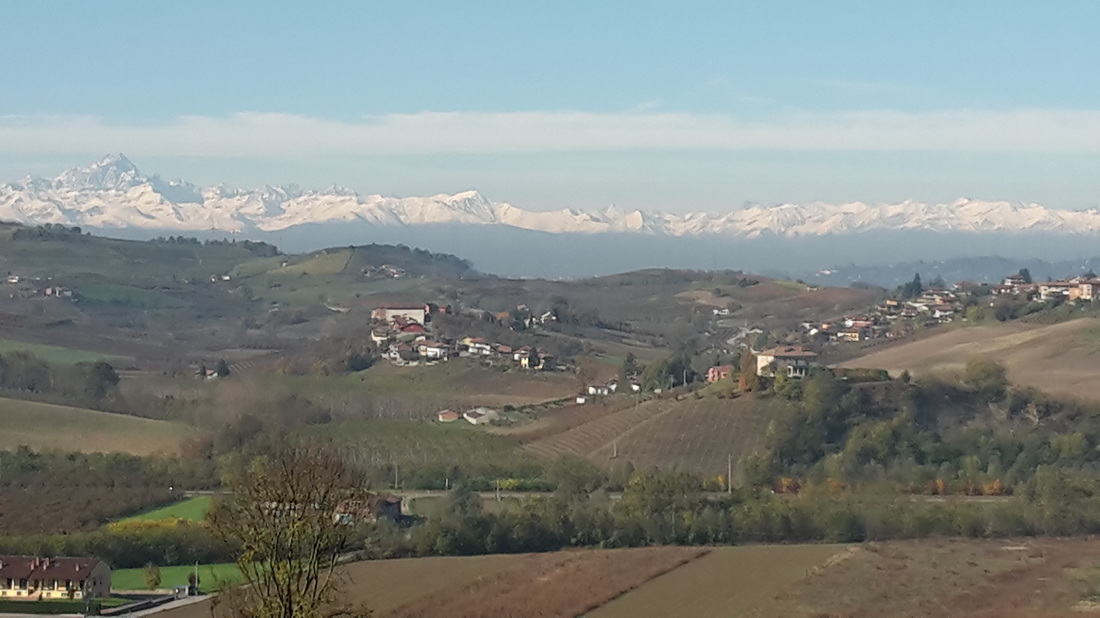
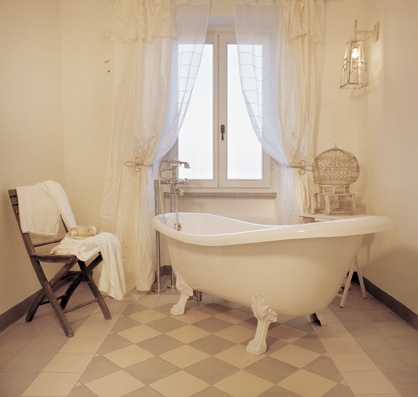
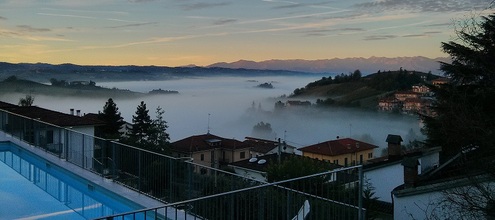
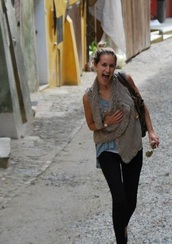
 RSS Feed
RSS Feed
